 Well known as Philippines national bird, Philippine Eagle with scientific name Pithecophaga Jefferyi or Monkey-Eating Eagle is a member of family Accipitridae which is endemic in Philippine tropical forests in eastern Luzon, Samar, Leyte and Minadanao. It has a brown and white-colored plumage, and a shaggy crest, and generally measures 86-102 centimeters in length, wingspan of 184 to 202 centimeters and weighs 4.7 to 8kg. It is among the rarest, largest, and most powerful birds in the world and considered as critically endangered species due to deforestation. Killing Philippine eagle is punishable under Philippine law by 12 years in jail and heavy fines.
Well known as Philippines national bird, Philippine Eagle with scientific name Pithecophaga Jefferyi or Monkey-Eating Eagle is a member of family Accipitridae which is endemic in Philippine tropical forests in eastern Luzon, Samar, Leyte and Minadanao. It has a brown and white-colored plumage, and a shaggy crest, and generally measures 86-102 centimeters in length, wingspan of 184 to 202 centimeters and weighs 4.7 to 8kg. It is among the rarest, largest, and most powerful birds in the world and considered as critically endangered species due to deforestation. Killing Philippine eagle is punishable under Philippine law by 12 years in jail and heavy fines.The Philippine eagle was first called monkey-eating eagle because of reports that it prayed exclusively on monkeys, but later it was found out that it is also ate other animals such as colugo, civets, large snakes, monitor lizards and even large birds like hornbills. In 1978 its name was proclamed as Philippine Eagle and in 1995 it was considered as national bird of the Philippines.
The life expectancy of Philippine eagle on wild is estimated to be 30 to 60 years. The complete breeding cycle of the eagle lasts two years, the female matures sexually at 5 years and males at 7 years. The paired eagle is monogamous and remains together for the rest of their lives. They breed between September to February with their nest 1.5 meters in diameter resembling huge platform made of sticks located 30 meters above the ground in a tall tree with open crown. The eagle is typically lay one egg but occasionally two have been reported. The incubation of egg will take 58 to 68 days with the help of the male. Both the male and female eagle helps in feeding the young and taking care of it for total of twenty months.
The Philippine eagle is now considered critically endangered species with population less than 500. The Philippine Eagle Center in Davao, organized to make protection and conservation is successfully bred on captivity for over a decade. The center has 36 Philippine Eagles, 18 of which are captive-bred and considered a major tourist attraction in Davao.
 Image via Wikipedia
Image via Wikipedia Image via Wikipedia
Image via Wikipedia Image via Wikipedia
Image via Wikipedia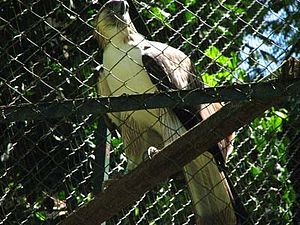 Image via Wikipedia
Image via Wikipedia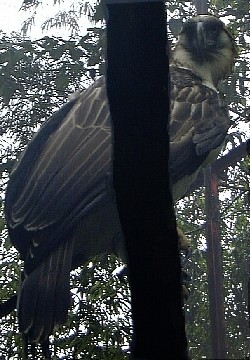 Image via Wikipedia
Image via Wikipedia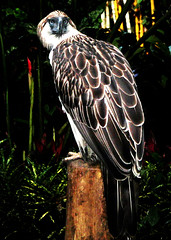 Image by MalNino via Flickr
Image by MalNino via Flickr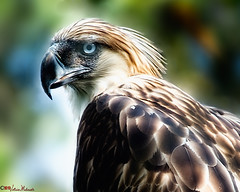 Image by MalNino via Flickr
Image by MalNino via Flickr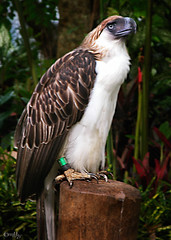 Image by MalNino via Flickr
Image by MalNino via Flickr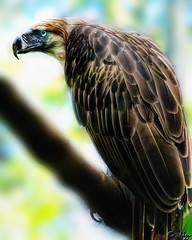 Image by MalNino via Flickr
Image by MalNino via Flickr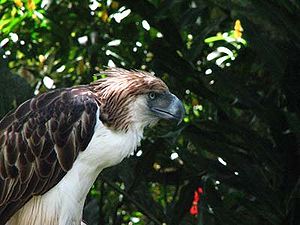 Image via Wikipedia
Image via Wikipedia Image via Wikipedia
Image via Wikipedia |
| Image Source |

No comments:
Post a Comment